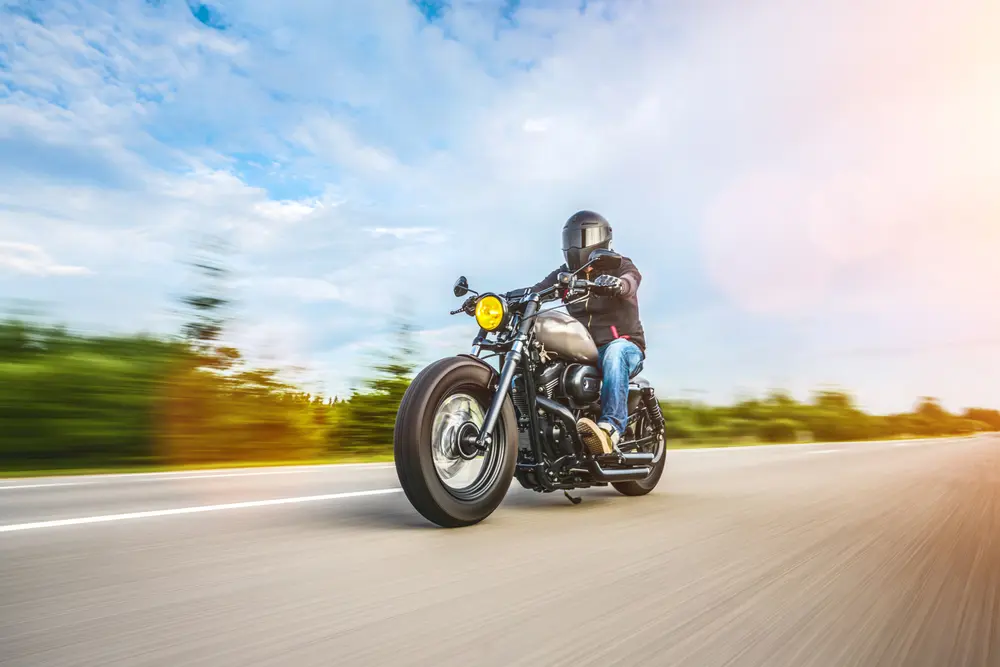There’s nothing like riding a motorcycle through the beautiful landscape of Wyoming, in the summer especially. But as any personal injury lawyer can tell you, the risks of injury and even death are higher for motorcycle riders than for ordinary motorists. If you or a loved one have been in a motorcycle accident, talk to a Laramie, Wyoming personal injury attorney as soon as possible to find out what your rights are and how to get justice.
What Unique Risks Do Motorcyclists Face That Increase Accident Fatalities?
Motorcyclists are exposed to a set of unique risks that increase their vulnerability to severe accidents and fatalities compared to other road users. Their vulnerability stems from several factors inherent to motorcycling itself as well as from certain external conditions that can exacerbate these risks.
1. Visibility
One of the primary risks motorcyclists face is their relative invisibility on the road. Motorcycles are smaller and just not as easy to see as cars and trucks, making them more likely to be overlooked by other drivers, especially in heavy traffic, driving rain, or at intersections.
All cars and trucks have “blind spots,” not just behind them to the side but also where the frame of their car holding the windshield in place blocks a narrow part of vision to the right and left, even in the front of the vehicle. A car or truck can usually still easily be seen around this narrow bit of frame, but a motorcycle can often fit directly behind it, so that a driver cannot see the motorcyclist at all, even if they are looking.
2. Lack of Physical Protection
Unlike cars, motorcycles do not provide a protective shell around the rider. This lack of enclosure means that, in the event of a crash, riders are much more directly exposed to impacts with the road, other vehicles, or stationary objects.
This exposure means that motorcycle accidents are more likely to cause severe injuries or fatalities. Helmets can mitigate head injuries, of course, but the rest of the body remains quite vulnerable, and even the best helmets can only do so much. The absence of airbags, seat belts, and the structural safety of a car’s frame places motorcyclists at direct risk of being thrown off their vehicle, which often results in catastrophic outcomes.
3. Stability and Control
Motorcycles have only two wheels, which inherently makes them less stable than four-wheeled vehicles, especially at high speeds or on uneven road surfaces. This instability can lead to loss of control more easily, particularly going over potholes, gravel, or on wet surfaces.
Additionally, the skill level required to maneuver a motorcycle safely is higher than that required to maneuver a car, so novice riders or those not adequately trained are at special risk of accidents, even in routine traffic situations.
4. Adrenaline
High-performance bikes are often capable of rapid acceleration and high speeds, and this can tempt riders to engage in risky behaviors, like speeding or weaving through traffic. The adrenaline rush associated with motorcycle riding can sometimes cause the brain to override safety considerations the rider actually knows quite well. This is a risk that motorcyclists have to actively be thinking about avoiding at all times.
5. Alcohol Impairment
Alcohol impairment is disproportionately deadly for motorcyclists because riding a motorcycle requires fine motor skills, balance, and quick decision-making at a level that isn’t required for driving cars and trucks. All of these are significantly impaired by alcohol.
This not only increases the likelihood of an accident due to impaired judgment and reduced reaction times but also diminishes the rider’s ability to act quickly to mitigate risks once they get into a dangerous situation.
6. Environmental and Road Conditions
Motorcyclists are particularly susceptible to bad weather and road conditions. Rain, ice, or even strong winds can be treacherous for riders. Unlike cars, where occupants are shielded from the elements, motorcyclists feel the full brunt of weather changes, which can affect visibility and bike handling.
Road maintenance issues like oil spills, loose gravel, or debris are much more hazardous for motorcyclists, as well. A small patch of sand or an oil slick can lead to a loss of control that might be nothing more than a minor inconvenience in a car but fatal on a motorcycle.
7. Mistakes by Other Road Users
“Right-of-way” violations are common against motorcyclists, usually because other drivers are not anticipating or seeing a motorcycle’s approach. This means that while car drivers can usually assume that other cars and trucks will yield as required, a motorcyclist can never make this assumption. Additionally, sudden lane changes or turns by cars without signaling can be catastrophic for a motorcyclist.
There’s also the issue of road rage or aggressive driving behaviors directed at motorcyclists. Some drivers of other vehicles assume that motorcyclists are all dangerous drivers or even simply resent their presence on the road to begin with. For obvious reasons, a road rage incident can be much more hazardous to a motorcycle rider to the driver of a car.
8. Education and Training
Programs like those offered by the Motorcycle Safety Foundation (MSF) and other global equivalents provide riders with the skills needed to navigate the roads safely, teaching not just basic riding skills but also the mental aspects of riding, like hazard perception and decision-making. However, not all motorcyclists have access to advanced training or can afford to take it. Training and experienced make even more of a difference to a motorcyclist than to a regular driver.
9. Public Perception and Behavior
There’s a need for a cultural shift in how motorcyclists are viewed, moving away from the stereotype of recklessness to recognizing them as vulnerable road users. This shift can encourage more cautious driving behaviors around motorcycles. Campaigns like “Share the Road” aim to cultivate this understanding and promote mutual respect and vigilance among all road users, but there’s still a long way to go. For now, the public perception of motorcyclists and the way drivers tend to treat them put motorcyclists in a more dangerous position than other road users.
10. Emergency Response and Medical Care
Due to the nature of motorcycle accidents, injuries are often more severe, and in many cases, what’s required to save a life in these situations is uniquely rapid and specialized medical intervention.
Add to this the confounding factor that many motorcyclists enjoy taking their bikes out into rural areas for a pleasant ride, and the time it takes for emergency services to reach a more remote or less accessible area has a huge effect on the outcome for an injured motorcyclist. Motorcycle injuries are also specific and unique, and sometimes first responders are not well-trained to deal with motorcycle-specific injuries.
Contact an Experienced Personal Injury Lawyer in Laramie, Wyoming for Help
These are just some of the factors that make it more dangerous for motorcyclists on the road than other users. But none of them are reason to stop riding. In general, motorcyclists are some of the best drivers on the road and usually keenly aware of their need to stay in control of both their bike and their emotions at all times.
When there is a motorcycle accident, disproportionately the car or truck driver is the one to blame, but the motorcyclist is the one to suffer the most devastating injuries. Contact us right away at Ochs Law Firm in Wyoming if you or a loved one has been in a motorcycle accident, and let us get to work protecting your rights.







